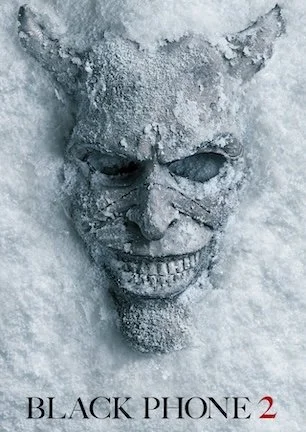Studio: Severin Films
Director: Richard Franklin
Writer: Everett De Roche
Producer: Antony I. Ginnane, Richard Franklin
Stars: Susan Penhaligon, Robert Helpmann, Rod Mullinar, Bruce Barry, Julia Blake, Helen Hemingway, Robert Thompson
Review Score:
Summary:
A nurse discovers that a comatose patient may have telekinetic abilities that he is using to invade her private life.
Review:
Thanks to the monster success of movies like Brian De Palma’s “Carrie” and the talk show prominence of spoon-bending charlatans such as Uri Geller, a corner of popular culture emerged in the 1970’s to answer a burgeoning interest in telekinesis and psychic phenomenon. “Patrick” came to life in 1978 with that growing sub-genre of entertainment as its father, and a movement in Australian cinema that would later be dubbed “Ozploitation” as its mother. That latter fact is noted often whenever “Patrick” is revisited in retro reviews and revivalist journalism. One legitimately wonders how much cult clout “Patrick” would have now without that Aussie association forgiving its shortfalls.
For someone who never speaks or blinks, and who spends the entire movie in a mostly unresponsive coma, Patrick is unusually interesting as a character, which can only be credited to the way director Richard Franklin, writer Everett De Roche, and actor Robert Thompson bring the personality, or lack thereof, to life. Forced to listen to his mother entertaining a gentleman caller, Patrick flips the switch on his sanity before flipping a heat lamp into the lovers’ post-coitus bathtub canoodling. Details are cloudy, but somehow Patrick is left in a coma from the fatal encounter and he spends the next three years languishing as a human vegetable.
Enter nurse Kathy Jacquard. She has languished herself for the past few years in an unfulfilling marriage that sidelined a once promising healthcare career. Now back in the game, Kathy accepts a position as one of Patrick’s fulltime attendants. As can sometimes happen between patient and caregiver, Patrick develops a crush on Kathy. Deprived of the five physical senses, the only way for Patrick to express his true feelings is to psychically toss around objects and to press typewriter keys conveying lurid messages. When Kathy’s ex starts making moves to win her back while also competing with her newfound interest in a hunky doctor, Patrick reveals himself to be the jealous type with a dangerous escalation in psychic tantrums.
Not quite as put upon as Carrie White, the audience’s first introduction to the character is him committing matricide after all, there is still sympathy to be had for Patrick. Whether he wants to merely hamstring or to outright kill his romantic competition is questionable, but he otherwise never truly creates havoc for havoc’s sake. In a weird way, he just wants to win the affection of a woman. Later in the film, Patrick’s mental manifestations are mostly self-defense reactions against attempts to kill him, further painting Patrick as more of a tortured, misunderstood soul than a contemptible evil.
Susan Penhaligon is a terrific counter as Nurse Kathy. Even in a movie that takes its time getting where it wants to go, Kathy is fast on the uptake. Characters in this kind of story usually require a great deal of demonstration before being finally convinced to believe something unbelievable. Kathy on the other hand, adapts fast and adapts well. She recognizes Patrick’s capabilities almost immediately and reacts with tolerance and concern instead of fright or disbelief. In fact, she cannot seem to grasp why everyone else is not as willing as she is to embrace the evidence of psychic phenomena.
That angle in her behavior helps to somewhat counterbalance a tempo that is not as eager as Kathy is to find a resolution to Patrick’s situation. Also offsetting that tone is the interesting manner in which Franklin chooses to stripe his film with subtle comedy. There is a difference between a film having a sense of humor and a character exhibiting one. “Patrick” treats itself seriously and plays the drama that same way, but it lets the air out when needed by constructing laughs into the way the characters express themselves. “Patrick” finds ways to provide humor through its people as opposed to its presentation.
In a 2012 interview with Spectacular Optical, “Patrick” screenwriter Everett De Roche revealed that his initial “script was a rambling 250 pages or so before (director Richard Franklin) got involved.” Those critical of the film’s leisurely storytelling style have a case for arguing that the same description holds true for De Roche’s final draft, even if that page number was ultimately cut in half.
Appreciation of “Patrick” certainly demands patience. Director Franklin and writer De Roche are in no visible rush to push the plot towards the finish line, though this intention is deliberately styled from Franklin’s fascination for Hitchcock suspense rather than a mistimed sense of pace.
“Patrick” is an entertaining take on a now familiar concept, but there is little use denying that it is too long for its own good. A gradually escalating rhythm that may have worked for psychological horror in the seventies has a hard time holding up to contemporary expectations for tension and thrills. For this reason, “Patrick” plays well as a curious blast from horror cinema’s past, but not as an undeniable classic withstanding the passage of time.
Review Score: 65






If “Match” had been shot in the 1970s, it would have become a cult classic for its skin-crawling weirdness that’s still snicker-worthy in a wicked way.